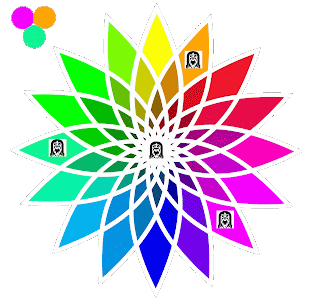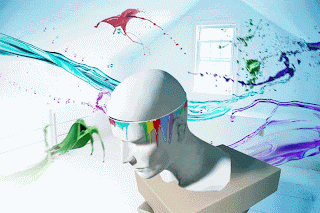
Wednesday, October 30, 2013
Tuesday, October 29, 2013
Thursday, October 10, 2013
Principles of Design Notes
Principles of Design
“People
ignore design that ignores people.” –Frank Chimero
What is
Design?
Design elements are the basic units of a visual image.
The principles of design govern the relationships of the
elements used and organize the composition as a whole.
All imagery -- art, design and photography alike – are
comprised of elements that can be broken down and analyzed. This goes for web
design as well.
Design
Elements:
Space:
Space can exist in two or
three dimensions. Also refers to positive or negative space. Promotes the
illusion of depth with foreground, mid or background elements.
Line:
Lines can be used to guide the
viewers eyes or provide a sense of movement or motion.
Color:
Color can evoke moods or to
draw the eye to a certain area. It can be used to mute or hide images, convey a
sense of place or time.
Shape:
Shapes can be either geometric
or organic. Some shapes can convey emotion or represent well known images.
Texture:
Texture is perceived surface
quality and can be implied or tactile, meaning an actual physical texture.
Value:
Value helps convey an illusion
of depth and gives objects shading. Value is the difference between light and
dark areas.
Design
Principles:
Unity:
A technique that can create a
sense of order, with a consistency of size and shape. Proximity can create a
sense of or lack of unity.
Repetition:
Repetition
is used all the time. Repetition is used all the time.
Harmony:
When things look like they are
in their place. When objects or shapes look like they belong. A rhythm to the
piece.
Proximity:
Incredibly powerful. Refers to
the physical placement of elements within the piece. Proper alignment and hierarchy
promotes legibility and logic within the piece.
Proportion:
The
relationship between objects, relative to size and scale.
Functionality:
The most important element of
design. The piece must both look good and covey a message. A balance must be
found between form and function in order to have a great piece.
Typography Notes
Typography
typography |tīˈpägrəfē|
noun
the
style and appearance of printed matter.
•
the art or procedure of arranging type or processing data and printing from it.
“Fonts are the clothing that our ideas
wear.”
Legibility
When
deciding a font, legibility is key. Serif vs Sans Serif. A serif is the little
foot at the end of a letter. Serif fonts feature these and sans serif fonts do
not. Serif fonts are easier to read at small sizes and sans serif fonts are
more recognizable at a large size.
Too many fonts spoil the design.
Too many fonts spoil the design.
Also, don’t use fonts that are too
similar and indistinguishable from each other. Fonts should contrast each other
and add emphasis.
ALL CAPITAL LETTERS ARE NOT AS EASY TO READ AS using lowercase font.
ALL CAPITAL LETTERS ARE NOT AS EASY TO READ AS using lowercase font.
Serif fonts without all caps are much
easier to read for body text.
Alignment
Alignment
Type can be justified left,
Justified middle,
Or
justified right.
The rag is the uneven edge of the body type, the less variation there is in the rag, the better. Don’t have lonely words or big chunks missing.
To add emphasis, you can use italics or bold fonts. Underlines can be used too but they generally
look unprofessional. Color and text size can also add
emphasis. As a last resort, changing the style of the type can work.
Arbitrarily distorting fonts
compromises their integrity. When scaling, make sure to use the shit key to
keep fonts consistent.
Balance
Is a font heavy or light?
A document needs to have balanced font, this may not require symmetry, but it needs to have a good feel and weight to the correct fonts.
Balance
Is a font heavy or light?
A document needs to have balanced font, this may not require symmetry, but it needs to have a good feel and weight to the correct fonts.
Wednesday, October 9, 2013
Tuesday, October 1, 2013
Subscribe to:
Comments (Atom)














